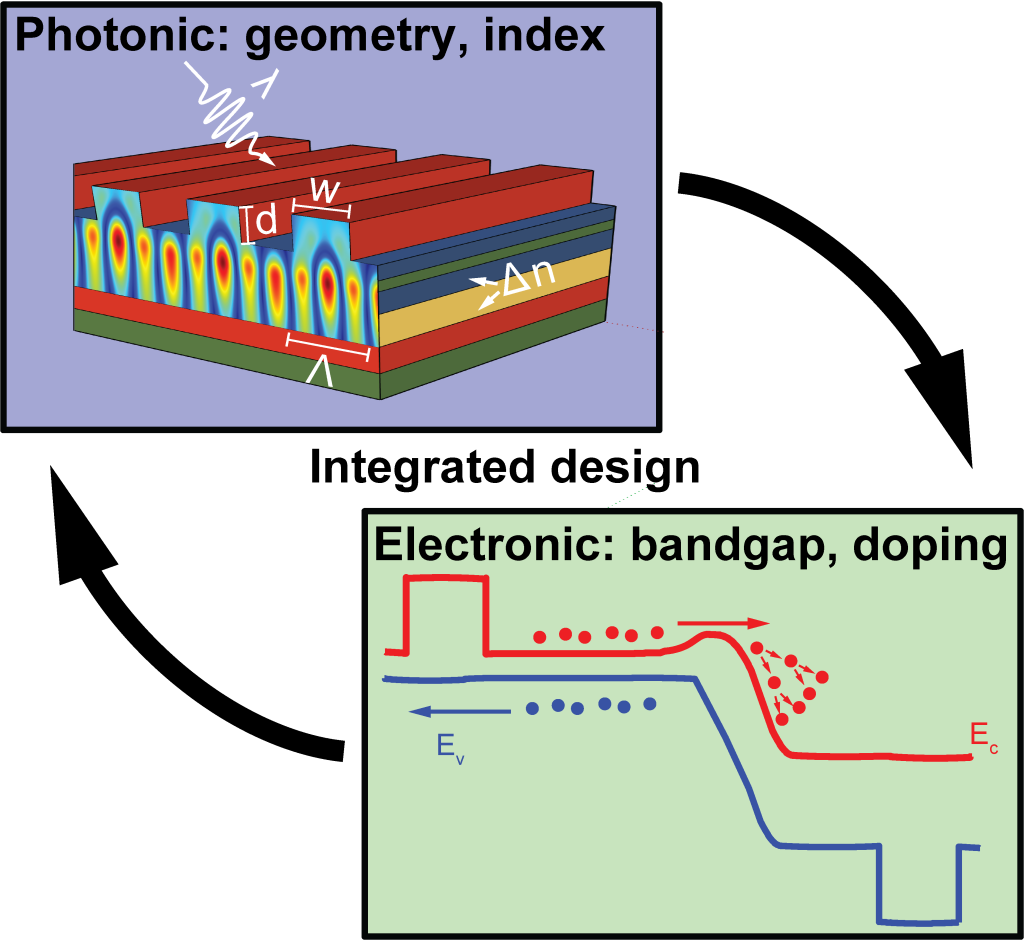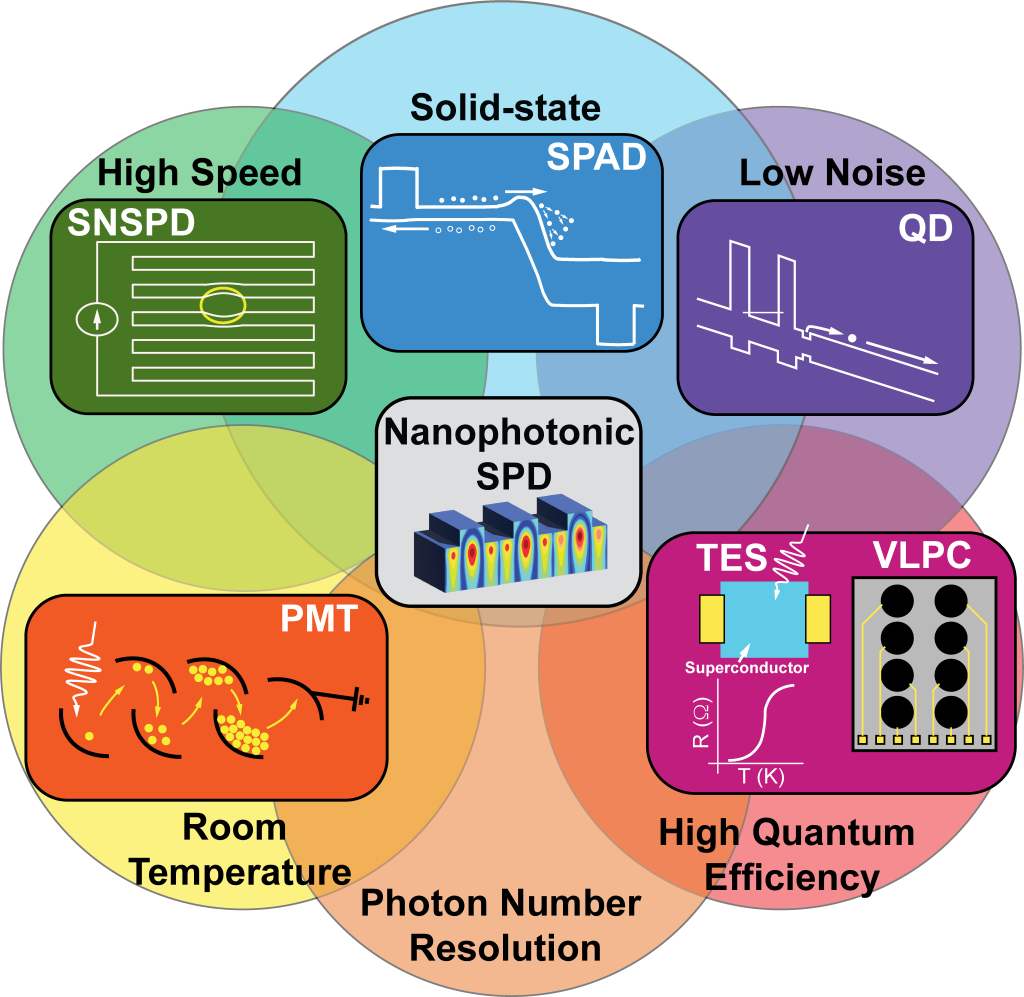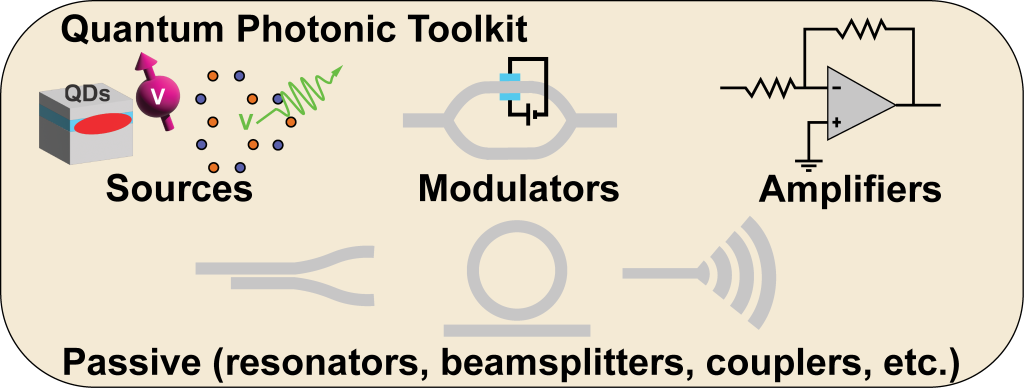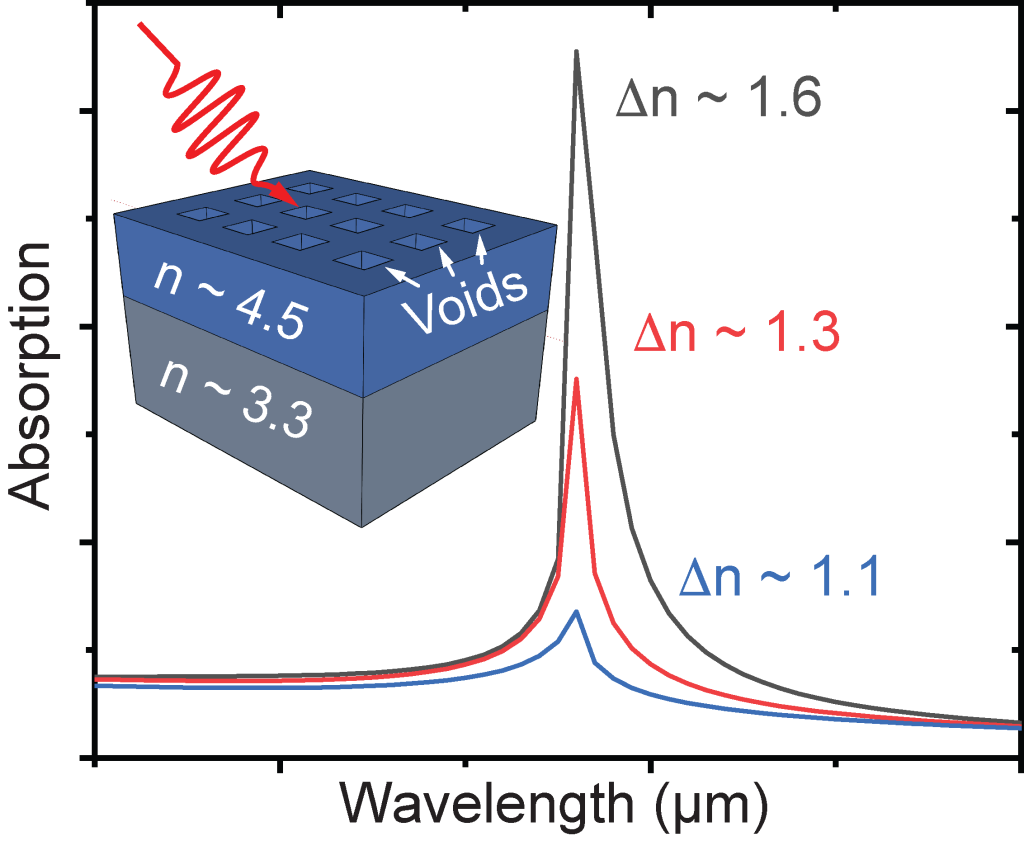Epitaxial Nanophotonics and Integrated Design

Optoelectronic devices typically emphasizes the perspective of electrons rather than photons. The APD lab’s core belief is that epitaxial nanophotonics, coupled with an integrated design approach, plays a pivotal role in advancing next-generation optoelectronic devices. This integrated design methodology demands a comprehensive understanding of the electronic, photonic, and atomic attributes of semiconductor materials and devices. It entails precise manipulation of the photonic paradigm, involving adjustments to material geometry and permittivity to enhance light-matter interaction. Additionally, it encompasses the electronic design paradigm, where we fine-tune the band structure of our devices to amplify functionality or enhance photonic capabilities. This holistic design philosophy results in an abundance of enhanced devices spanning a wide range of materials, wavelengths, and applications. This approach has enhanced luminescence, improved device response, lowered device noise, and significantly increase detector operating temperature.
Quantum-limit Devices

Epitaxial nanophotonic avalanche photodiodes (APDs) hold significant promise for achieving quantum-limit single photon detectors (SPDs). Our primary emphasis is on the research, production, and thorough characterization of these nanophotonic SPDs. APD technology is pivotal not only in advancing quantum information science but also extends its influence to various fields, including medical imaging. This encompasses applications like fluorescence lifetime imaging microscopy, positron emission tomography, and Cherenkov detection. Furthermore, APD devices are utilised in widely adopted consumer technologies such as LIDAR.
High-index Photonic Circuits
The photonic QIS toolkit requires a lot more than nanophotonic SPDs. The figure to the right illustrates a handful of these “tools”, both active components like sources, modulators, and amplifiers, as well as passive devices like waveguides, resonators, beam splitters, couplers, etc. The APD lab is discovering and inventing alternative ultra-low-loss materials for the quantum photonic toolkit.

High-index Photonic Modes and Devices

Recently, researchers proposed the utilization of high refractive index materials to enhance light-matter interaction, potentially offering a viable solution to bridge this gap. The APD lab aims to identify and explore nanophotonic structures that can support exotic modes that are exclusive to high-index systems. Examples of such modes can range from guided mode resonances, bound states in the continuum to Mie type photonic modes.
